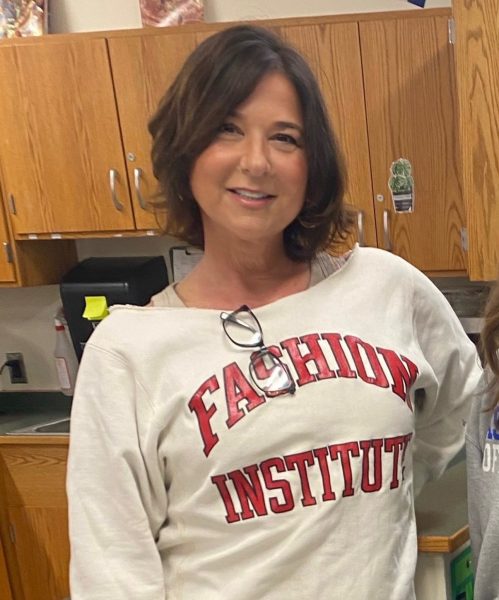Regeneron Participants’ Project Summaries
Arpie Bahkashian: Inflammatory Bowel Disease (IBD) is a chronic illness characterized by the inflammation of the gastrointestinal tract, and if not treated properly, can result in the development of cancer, arthritis, and other illnesses. Although the exact causes are not known, scientists speculate that some genes involved with intestinal inflammation are the primary cause of IBD. This experiment used a novel technology known as “Nano Blades” in order to study three specific genes involved in IBD: CX3CR1, TAP1, and XBP1 in Intestinal Epithelial Cells and Embryonic Stem Cells. Nano Blades are new types of delivery vectors capable of inducing mutations in a more efficient and transient manner. In order to study these genes, Nano Blades were used to deliver a CRISPR/Cas9 system into target cells in order to induce single strand breaks, or mutations, in the genes studied. The results of this experiment were successful, and in future perspectives, this research will continue by studying the immune response of the target cells mutated and learning how mutations in these genes affect the development of intestinal inflammation.
Sara Bahri: Aminoglycosides are nonpolar, broad-spectrum antibiotics, known for causing ototoxicity and nephrotoxicity. This study investigated the altering of bilayer elasticity as a novel mechanism for aminoglycoside antibiotics’ toxicity. Elasticity, composed of both the compression and bending moduli, is one of many membrane properties studied in the lipid bilayer in order to understand the effect that the drug has on the membrane, thus, correlating to the toxicity of the drug itself. Here, changes in bilayer elasticity were quantified using various concentrations of Gentamicin and Kanamycin in both neutral and negative vesicles. To ensure that the antibiotics’ effects are due to the differences in charge (as a nonspecific mechanism), I tested their effects on both neutral vesicles formed by 1,2-Dierucoyl-sn-Glycero-3-Phosphocholine (DC22:1PC) and negatively charged vesicles formed by mixtures of DC22:1PC and either 1,2-Dierucoyl-sn- glycero-3-Phospho-L-serine (DC22:1PS) or 1,2-Dierucoyl-sn-Glycero-3-Phosphoglycerol (DC22:1PG). It was concluded that the aminoglycoside antibiotics alter bilayer elasticity, as sensed by gramicidin channels, therefore, define the nonspecific mechanism resulting in their toxicity.
Andie Glanzer: This project examines the distributional equity of urban tree canopy (UTC) cover in Long Island using aerial Google Imaging and census data. UTC provides ecosystem, economic, and health benefits to a community; yet, it is being threatened by the development of commercial and residential areas, invasive insect damage, natural aging of trees, and an increased occurrence of extreme storms. The percent change in UTC from 2007 to 2017 was recorded in potential environmental justice communities and in Tree City USA towns to determine if regulatory measures are effective in curbing tree canopy loss. Environmental justice involves an equitable distribution of environmental burdens and amenities. The potential environmental justice towns researched, Hempstead and Southern Uniondale, have a higher percentage of minority populations and a higher population impoverished than neighboring towns. The potential environmental justice towns were compared with Tree City USA communities, which is a governmentally funded program that regulates and encourages UTC. The Tree City USA towns studied were Lynbrook and Floral Park. To determine UTC, an observer used aerial Google Earth imaging to record tree canopy that a random sampling of points occupied in 2007 and 2017. It was found that potential environmental justice areas saw a greater loss of tree canopy than Tree City USA communities; however, this was not statistically significant, which indicates that regulatory measures did not influence the tree canopy loss. These findings suggest that current UTC conservation efforts are insufficient in maintaining and growing tree canopy.
Julie Lampert: Electronic devices are an essential part of daily life, and its technology is advancing rapidly. Quantum computers, spintronics devices, and more have the potential to revolutionize technology, but many still lack the materials required to function at the highest level. A newly discovered class of materials called Dirac semimetals are being investigated as candidates for use in these devices, as they are known to exhibit many unusual electronic phenomena. The most promising candidate for these devices is Cadmium arsenide (Cd3As2) because it is the only stable Dirac semimetal, making it viable for use in these devices. This project seeks to better understand how Dirac semimetals work by growing a novel, extremely pure Cd3As2 thin film. Current methods of Cd3As2 thin film growth involve depositing the Cd3As2 atop another material called a buffer layer, leaving the Cd3As2 layer susceptible to impurities. To remedy this, a new buffer layer was engineered. Through analysis of its electronic properties, it was concluded that this film was of higher quality than similar films grown on other buffer layers. These findings allow for a better understanding of the fundamental aspects of Dirac semimetals and pave the way for new materials with impactful applications.
Maria Russotti: The solution to excess carbon dioxide in the atmosphere lies in oxidoreductases and their cofactors. Oxidoreductases are enzymes that cause the transfer of electrons between molecules. For oxidoreductases to work, they need their cofactors which are essentially “helper molecules” for an enzyme. Formate dehydrogenases (FDH) are important enzymes that require cofactors. Formate dehydrogenases can provide means for the development of hormones, like insulin, and the capture of CO2 in the environment. However, using FDH is an expensive and time-consuming process. This study was aimed at finding an efficient way to use FDH from yeast (CboFDH), by finding a substitute for its current cofactor. Ideally, CboFDH will use NAD-capped RNA as a cofactor. NAD-capped RNA is made in nature and are cost effective. In this experiment, instead of testing NAD-capped RNA directly, 3’NADP was used as a model for NAD-capped RNA, because both have similar structures. To make CboFDH show activity with 3’NADP, multiple mutations of the enzyme were made, changing its properties using a technique called site-saturation mutagenesis and tested its activity. The results indicated that two CboFDH mutants showed success using 3’NADP. These findings can aid to efficient use of oxidoreductases for hormone creation and diminishing CO2 levels.
Emily Awad: In this study, a Caco-2 cell model was used to replicate a baby’s small intestines to study the effects of exosomes on the model. Necrotizing Enterocolitis is a severe disease that affects the intestines of preterm babies by attacking the baby’s small intestines, resulting in increased inflammation of the small intestine wall. Exosomes are known to contain extracellular vesicles, which include anti-inflammatory factors that help protect the baby’s immunity. Caco-2 cells are differentiated cells that transform into epithelial cells. These epithelial cells contain similar functions to exosomes by forming tight junctions between one another to access cellular communication and to prevent any seeping bacteria into the small intestines. This process was measured by a Transepithelial Electrical Resistance device. For the experimentation, the goal was to determine if exosomes had a potentially statistical significant decrease of inflammation on the small intestine wall, using the model created. Results have shown that there was very little statistical significance between the different extracellular vesicle groups. Thus, this information could be informative to mothers who have just delivered regarding benefits of extracellular vesicles and how they could potentially decrease their child’s risk of NEC.
Natalie Cardoso: Value-based decision-making is built upon the rating of items and decision between the items. The drift diffusion model describes basic decision making as the accumulation of evidence and the rate at which this occurs is called drift rate. However, the drift-diffusion model assumes perfect knowledge of the items at all times. An extension of the model, the attention drift diffusion model, takes visual attention into account. When testing the predictions of the attention drift diffusion model, two competing models were found: the multiplicative and additive model. The multiplicative model represents the exaggeration of value when items are being looked at. The additive model describes the overall boost of value when items are being looked at. To determine which model described the data the best, an experiment was conducted that controlled the amount of time the participant was able to look at each item to eliminate implicit biases. A novel mechanism, called the Hierarchical Drift-Diffusion Model, that combined both regression and modeling to mathematically determine model fit used. It was found that both additive and multiplicative relationships exist within the best fitting model as well as effects of the order of items. In future studies, these effects should be looked at across time to see when each strategy is being used. With the role of attention in value-based decision-making better understood, attention can be manipulated to help those suffering with OCD, maladaptive decision-making, and impulsivity.
Mikayla O’Hagan: In recent years, the role of urban trees in improving air quality has received increasing attention, as trees have relatively higher capacity of metal accumulation compared with other types of vegetation. Since different plant species differ greatly in their sensitivity to pollutants, it is necessary to test a variety of trees to determine which species are the best at taking in pollutants; since there is no simple or effective way of getting rid of high lead concentrations. In this project, which tree species could potentially help absorb lead contaminants from the soil and reduce the lead levels were investigated. The trees presented two benefits in this project: Not only do certain species help to reduce lead in soils by up taking lead, they also provide environmental, social, and economic benefits. Planting a new tree in the contaminated soil on a residential property is significantly less expensive than either cementing or trying to cover up the contaminated soil.
Elena Grajales: Difficulties in developing treatments for Parkinson’s disease (PD) is because of a limited understanding of its causes. So, the role of the protein Neuronal Pentraxin 2 (NPTX2) in brain tissue of deceased healthy and PD patients was investigated. NPTX2 plays a role in cell death of dopaminergic nerve cells, which is the principal driver of PD development. Also, NPTX2 in Alzheimer’s Disease and diminished cognitive performance have been shown to be correlated. NPTX2 expression was analyzed with Western Blot, a common method for determining protein levels. The younger PD population (average age 66) consistently had higher NPTX2 than healthy patients, unlike the older population (average age 86.7), which had a greater variance between samples. Thus, high NPTX2 may lead to PD development while low NPTX2 in older patients may be due to the patient’s development of dementia, which is found in approximately 40% of PD patients. Further research will explore the relationship between dementia in PD and NPTX2 expression. Hence, these findings suggest a connection between the reasons of cognitive decline in the two most prevalent neurodegenerative diseases. Additionally, targeting high NPTX2 early in PD development may be an effective treatment of the disease as a whole.


































